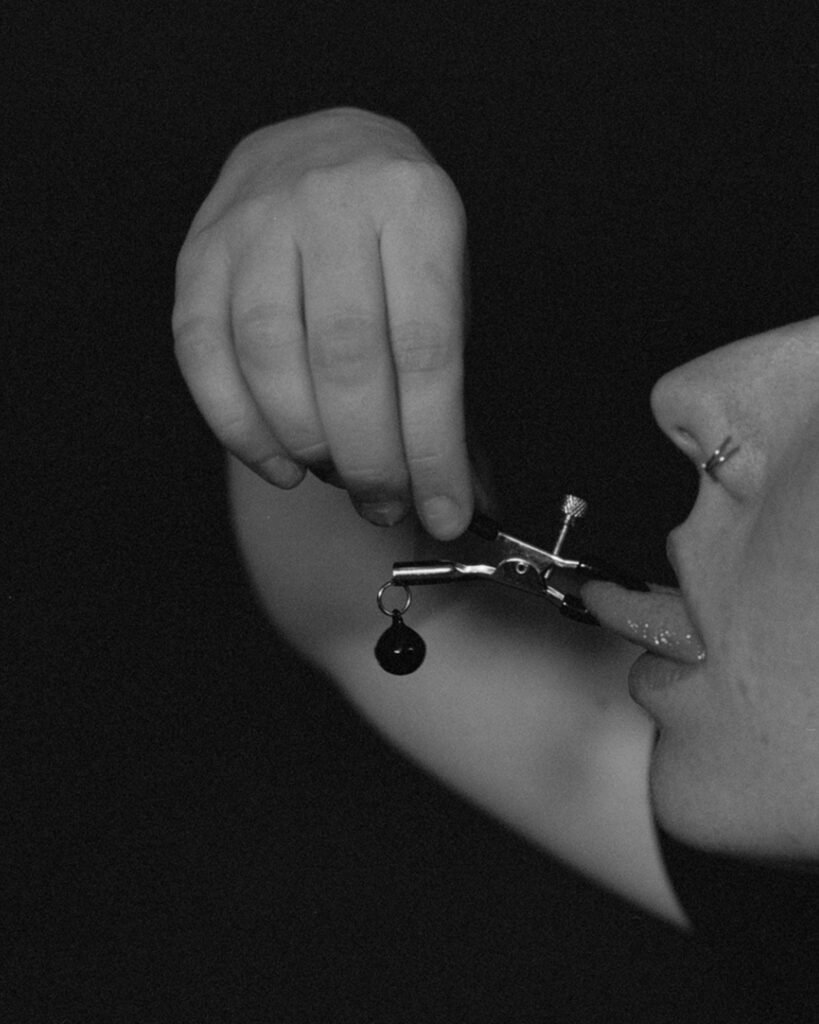Ilaria Sponda: How would you describe Against Domestication? Could you tell me a bit about the origins of this body of work?
Shia Conlon: Against Domestication is a project that spans photography, filmmaking, and writing. The work was my MA work at the University of Fine Arts in Helsinki. It was a slow process of interrogating the ways in which I had been socialized as a child. I began this dissection by looking at the power that had ruled over my body in it’s many shapes: the family unit, the state, religion, and normative views of gender and sexuality. This led me down a road of recreation, where I imagined that I could override my traumatic memories by using the camera to recreate them. This was influenced by Ulrich Baer’s idea that trauma registers in the brain in the same way as a photograph is taken, the subsequent memory is the same as an image revealing itself in a darkroom tray. I wanted to imagine what it would be like to take back some power over these trauma narratives, how would that feel in the body? What does the camera mean there?
IS: You say that “the act of speaking, making a language, post-trauma is political”. If so, what kind of consequences do you wish your visual speech to have?
SC: I want my images to speak louder than the cis-het narratives that dictate queer and trans people’s lived experiences. I want images to make sense to those who know, and confuse those who don’t. I want you to find the secret messages and codes within them, and find some comfort in the many worlds I try to create. Worlds of sickness, comfort, sexuality, perverseness, softness, worlds full of angry young girls and joyful queer and trans bodies.
IS: What’s the agency of photography to you?
SC: For me, photography has always been a way of speaking. It takes me longer to write and to process words, conversations too. Images, however, register immediately with me. I love cinema also for this reason. I love the way a slight difference in colour correction, in the film used, or the camera is chosen, all change the way something is read. As tricky as being seen is in a world full of surveillance, I still somehow believe in representation and visibility, because I know how it feels to see an image of something that feels like me, that ‘a-ha!’ moment.
IS: Would you elaborate a bit on your thoughts on the concept of oppressive power structures?
SC: I perceive most of the world to be full of oppressive power structures, as we live in a point of time where the rich get richer whilst the poor crowdfund their healthcare. For me, power structures can show up in broad ways like the transphobic or ableist laws put in place to physically separate and harm vulnerable people and also in personal ways in the way people reproduce and reinforce learned behaviours, such as cancel culture within communities.
IS: Where do you think the power of images in recollecting memories resides? Could they completely substitute words?
SC: I don’t think so, and I don’t think that would even be any better. It also depends so much on how your brain and body works, some people register memories stronger as smells, some people as sensations in their body, others with words and images, or both. I see image-making also as some very intrinsic human mode that we use clumsily use to try and record our stories, to say I’ve been here, I felt like this, I saw it like this..
IS: The vibrant in your images tell of the vividness of the memories you recall and restage. What’s the meaning of the black and white images that interwove with them?
SC: I think the black and white came about for some images when the colour feels like too much in combination with the story I’m trying to tell. Sometimes, colour needs to be removed so that the narrative comes more to the forefront. I also think memory works in this way, sometimes an image stays with you vividly, other memories are more vague, hazy. This work also benefits from being seen physically, hung in a way that is not linear, in this case the images and colours blend into each other as a seamless story with no end, just moments that cycle back on themselves.
IS: What do you think might be next for you?
SC: I’m working on a long term project called Sites of Dreaming about the lives of trans people here in Finland. The laws that are in place here go against human rights and I am trying to create moments of joy and reprieve in an otherwise claustrophobic environment. The project will be made into a book and a solo show in Helsinki in Hippolyte Gallery (February 2023).
Shia Conlon is an Irish artist and writer currently based in Helsinki. Much of his work has been centered around marginalized voices and about growing up in the landscape of working class Catholic Ireland. His current research explores ideas around non-linear time, queer representation, and the power of archives for queer and trans people. His work has been exhibited in London, New York, Dublin, Helsinki, San Francisco amongst others. His art has been written about in PHMuseum, The New York Times, i-D, Dazed and Confused and Huffington Post UK & US.













